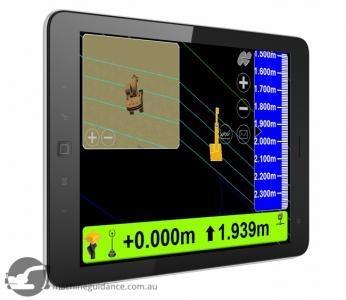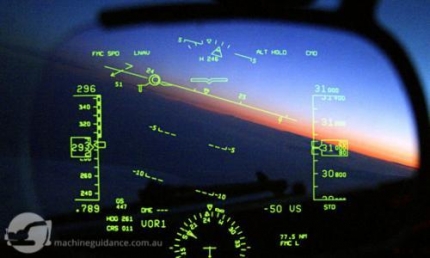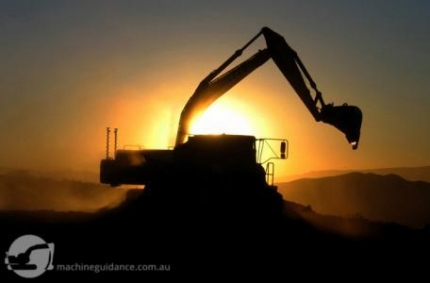What's Next For Machine Control?
In the fast-paced world of technological development, Position Partners' Machine Control Product Manager Joel Seddon takes a step back to reflect on what we might expect to see next.Published: September 2013
Author: Joel Seddon, Machine Control Product Manager, Position Partners
Real-Time Surface Profiling
By adding a LiDAR scanning device to the 3D machine control system that works with a positioning reference from GPS, operators would be able to view live cut/fill volumes and surface changes inside the cab. This information could also be made instantly available to the office using existing telematics solutions.
This would give operators, project managers and surveyors a great deal of accurate information and historical references throughout the lifecycle of a project, to maximise efficiency and productivity.
Although LiDAR scanning technology is readily available and used extensively in the survey and GIS industries today, the challenge for live surface profiling is the post processing of the data generated. Significant advancements in processing power and speed would need to be seen before such a solution would be viable, however you only need to look back at the changes in processing capabilities of a PC in recent years to see that it may not be too far out of reach.
An alternative solution to LiDAR scanning would be real-time video profiling. Instead of point cloud positioning data, this would instead generate a live video feed of the surface from the machine, which could then be turned into 3D models for volume calculations and terrain models.
Getting Smart About Displays
As the use of smart phones and tablets becomes increasingly widespread and continues to replace other computer systems, we can expect to see machine control display boxes replaced by software that can run on a range of portable media devices.
The introduction of wireless connectivity to sensors and antennas would make the systems more portable, easily transferable between machines and the installations far less complex. The devices would need to have better dust and vibration tolerance than the current models, however as more and more industries and businesses rely on smart tablet technology they are bound to become more robust.
Another feature we can expect to see in the not-too-distant-future is the introduction of a 'head-up' display in the cab of a machine, similar to the ones currently seen in aircraft and some modern cars. This technology transforms the windscreen into an LED display, without obstructing the operator's view. 
This could show the operator comprehensive information about proximity to grade, slope angle, speed, satellite signal strength and much more. By displaying the information on the glass rather than in a separate control box, the operator is able to keep his eyes on the job without having to turn away to look at a separate control box. Instead, the control box would only be needed to configure settings and set the design file.

Display Image - Left

Display Image - Right
Spare
 
 
 
 
 
 
 
 
 
 
 
 
Automatic Calibration
Imagine never having to calibrate a machine control setup again! Today, each time a different bucket or attachment is used, or the machine control system is transferred to a different machine, a calibration and measurement setup is required to ensure the sensors are calculating the movement of the blade or attachment correctly.
In the future we may see the attachments fitted with RFID chips, which the machine control system would scan and automatically use to set the characteristics. Not only would this save time, it would also significantly reduce human error and reduce the need for support.
Smarter Sensor
In a current machine control setup, slope sensors are used to measure the implement angles of the machine blade, bucket or attachment.
We have already seen advancements in sensor technology with the development of non-contact sensors, which are integrated into the machine cylinders either as part of the original manufacture or potentially as a retrofit solution. As the cylinders extend or retract, the sensors inside calculate the position and angle of the blade without the need for external slope sensors.
Alternatively sonar or light based sensors could be used to replace the traditional slope sensors to read the blade or attachment position. As machine manufacturers integrate positioning technology into the original equipment, the sensors will become even more accurate, reliable and advanced than they are today.
In addition to more integrated sensor technology, another development could be energy-generating sensors that use the machine vibration to generate power to self-charge. This would enable the sensors to become wireless and they could stay permanently attached to the machine without needing to be recharged at the end of a working day.
Spare (2)

Automated Excavators
In a similar vein, some machinery manufacturers are already developing smarter sensing technology for excavator machine control. Today, the stick, bucket and boom on an excavator all need to be controlled separately to get the desired level - a complex skill to master for an operator. 3D machine control systems tell the operator his proximity to grade but they are unable to control the machine automatically as there are too many variables involved.
New automation technology enables the stick, bucket and boom to be controlled simultaneously with a single control.  The control is used to move one of the three components and the remaining two are calculated and controlled automatically. This remarkable development could give a new operator the same capabilities as a 20-year veteran when it comes to accurately controlling the machine.
Conclusion
Some of the developments listed above may not happen for a number of years - or even at all - while others could be just around the corner. Less futuristic examples could be the introduction of positioning sensors for machine rippers that measure depth and accuracy, or the ability to support rotating excavator buckets that can be used to dig or to scoop.
One thing that is certain is that machine manufacturers will increasingly integrate positioning technology into the machine build, making machine control systems easier to install and an integral part of the overall solution.
Credit Source
Article courtesy of Position Partners Machine Control e-News (August 2013).
Return to Articles Menu
 
 

